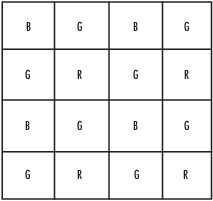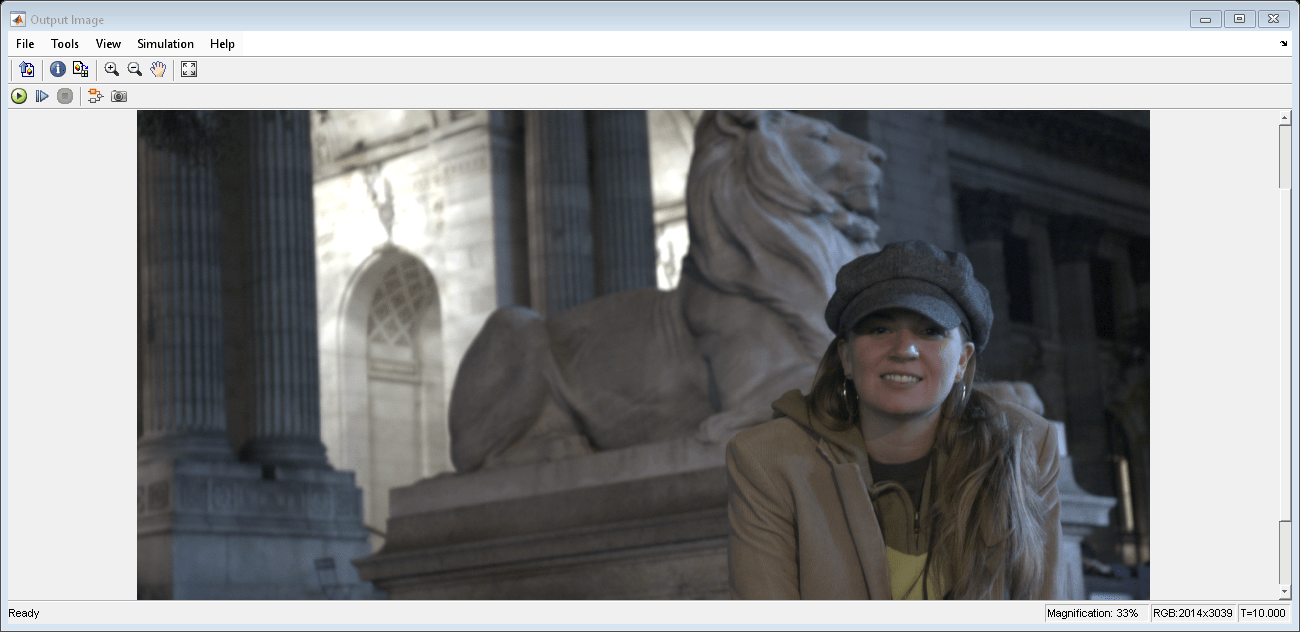Demosaic
Demosaic Bayer format images
Libraries:
Computer Vision Toolbox /
Conversions
Description
The Demosaic block takes images in Bayer format and outputs RGB images. The block performs this operation using a gradient-corrected linear interpolation algorithm or a bilinear interpolation algorithm. This figure illustrates a 4-by-4 image in Bayer format with each pixel labeled R, G, or B.

Examples
Ports
Input
Output
Parameters
Block Characteristics
Data Types |
|
Multidimensional Signals |
|
Variable-Size Signals |
|
References
[1] Malvar, H.S., Li-wei He, and R. Cutler. “High-Quality Linear Interpolation for Demosaicing of Bayer-Patterned Color Images.” In 2004 IEEE International Conference on Acoustics, Speech, and Signal Processing, 3:iii-485–88. Montreal, Que., Canada: IEEE, 2004. https://doi.org/10.1109/ICASSP.2004.1326587.
[2] Gunturk, B.K., J. Glotzbach, Y. Altunbasak, R.W. Schafer, and R.M. Mersereau. “Demosaicking: Color Filter Array Interpolation.” IEEE Signal Processing Magazine, 22, no. 1 (January 2005): 44–54. https://doi.org/10.1109/MSP.2005.1407714.
Extended Capabilities
Version History
Introduced in R2006b

